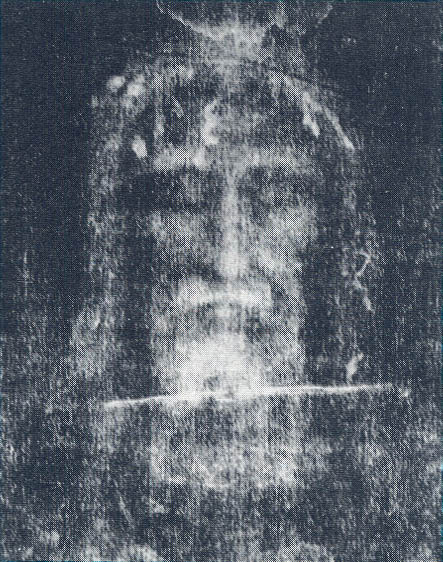Has the Shroud of Turin Been Dated—Finally?
Sidebar to: Two Questions About Crucifixion038

The cardinal of Turin, Anastasio Ballestrero, announced to the world on October 13, 1988, that radiocarbon tests on the Shroud of Turin had dated the cloth with 95 percent certainty to between 1260 and 1390. Venerated for centuries as the authentic burial sheet that wrapped the body of Jesus, the shroud, according to church authorities in Turin as well as to most other people, must now be understood as a medieval cloth bearing the image of a naked man.
The cardinal was reporting the independent test results achieved at three respected radiocarbon laboratories selected by him, on the advice of his scientific advisor—at Oxford University, at the University of Arizona and at the Federal Institute of Technology in Zurich. Supervision was by the British Museum. Each laboratory received a postage stamp-size piece of the shroud as well as two other control samples of known date, including a piece of cloth from Cleopatra’s mummy, from about the first century B.C., and a Nubian tomb cloth from the 11th century A.D. The dating results on all of the samples at each of the labs were in tight agreement.
A piece of linen about 14 feet long and 3.5 feet wide, the shroud bears the faded, straw-colored image of the front and back of an unclothed man about 5 feet 7 inches tall, with his hands folded over his genital area. The images on the cloth appear head to head, as if they had come onto the cloth when it was wrapped in a continuous piece on top of and beneath the body. There appear to be numerous wounds on the corpse and signs of bloodstains. Even more striking than the signs of a tortuous death are the astonishingly clear facial details of lips, eyelids and nostrils.
Not everyone agrees that the last word has been said on the shroud’s date. The Association of Scientists and Scholars International for the Shroud of Turin (ASSIST) questions the accuracy of the results. One charge leveled by ASSIST is that the shroud samples used were from only one place on the shroud. This location in one corner of the cloth, according to ASSIST general projects director Paul C. Maloney, is very near an area which was scorched and water damaged in a fire in 1532. More critical, according to ASSIST, is that the linen cloth may have undergone some reweaving following the fire, introducing 16th-century, or later, fibers into the original 039cloth at the point where the sample was removed. Evidence of melting on the silver casket that held the shroud makes it certain that at least part of the casket had been heated to the melting point of silver, 960 degrees centigrade. Maloney notes that “pressure cooker conditions” existed inside the reliquary during the 1532 fire. Water, seeping into the reliquary from the melted corner, hitting the superheated surface of the metal, might have instantly become steam. Maloney speculates that carbon-based materials on the surface of the flax fibers might have been dissolved and transported into the fibers or into the very molecular structure of the flax. Textile specialist John Tyrer of Manchester, England, observes that dissolved carbon would have “topped up” the carbon levels in the cloth with more modern carbon, thus making the cloth appear younger in radiocarbon tests. Whether the carbon dissolved and, if it did, what the actual effect was on the accuracy of the recent radiocarbon-dating results is unknown and requires experimentation, so says ASSIST.
In a telephone interview, Dr. Luigi Gonella, professor of physics at the Turin Polytechnic Institute and scientific advisor to Cardinal Ballestrero, explained why the three test samples were all chosen from the same spot on the shroud: “Our objective was to cause minimum damage to the shroud. We do not want the shroud to be a checkerboard of holes.” The area chosen, said Gonella, was already damaged and was the only place on the main body of the shroud where there is a free edge. Gonella disagreed with ASSIST that the chosen samples were more likely to be contaminated than samples from other areas.
Dr. Douglas Donahue, co-director of the accelerator radiocarbon laboratory at the University of Arizona emphasized that the shroud test labs took great care, using three different methods, to remove all contaminants. “There was no indication,” Donahue said, “of any contamination on the samples tested.”
Although Dr. Gonella doesn’t totally eliminate the possibility of additional radiocarbon tests in the future, he is more interested in the prospect that they are “free at last to do thorough physical and chemical investigations.” These future tests can be performed on microsamples that will not alter the appearance of the shroud.
In October 1988, scientists from STURP (Shroud of Turin Research Project) met with Dr. Gonella to propose a program of additional physical and chemical tests to improve conservation of the shroud and to investigate how the image came onto the cloth. No answer to this proposal has yet come from Turin.
All agree, whatever their view of the reliability of the recent dating, that we still cannot answer the question: How did the image of whoever it is come onto the cloth?
It seems unlikely, despite the continuing reverence for the shroud as a religious symbol, that most people will still burn with eagerness to explain the genesis of an image now understood as medieval. Nevertheless, for those scientists, scholars and laypeople for whom the shroud has become a mystery that must be solved, no matter where it leads, work will go on as long as the church authorities make the shroud available for study.
